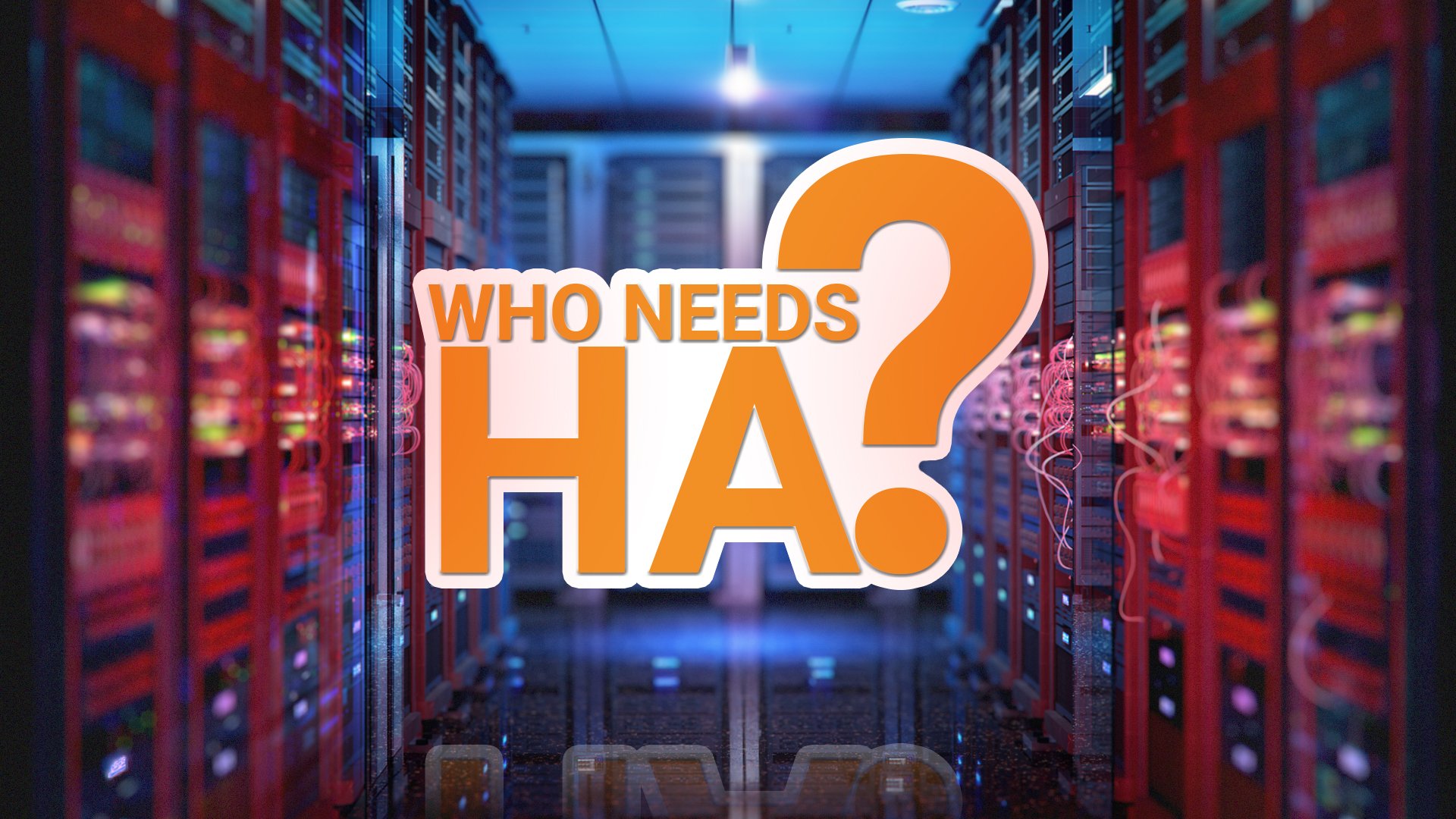When considering ‘Who needs high availability?’ ask the following question: is downtime unacceptable to your business? Do you work for an Enterprise company? Is access to your services & data around the clock important, if not required? Then likely, your business can benefit from a Highly Available (HA) IT system.
To examine these industries at a deeper level, I wanted to take one of the most prominent players in the tech game, Cisco Systems, and discuss their use case. As an OEM, Cisco has customers who will not deploy systems without HA. Instead, they need HA inside their appliance to recover from an outage within seconds so their end clients can keep their mission-critical systems up and running seamlessly. Essentially, downtime costs Cisco too much.
According to Gartner, the cost of downtime is $5,600 per minute. Of course, there is a considerable variance depending on your sector, revenue, and the number of people affected. One of the worst parts of having downtime is that almost half of it is unplanned. With over 77,000 employees globally, that would be a lot of Cisco employees twiddling their thumbs, waiting for their servers to get back up, losing focus, time, and money.
The Educational Sector
There are so many factors at play as to why uptime is essential here and why the educational sector needs high availability. Many universities have had remote learning in place for a while. Earning a college degree can be done entirely online these days. While this is a wonderful opportunity for students, it would never exist without the proper infrastructure to support the data.
Athabasca University, for example, a large distance-learning online University, needed HA virtualized servers to provide all of their 260,000 students with access to their campus database. After implementing HA software, Athabasca now has fast, efficient, and reliable services for its students and employees alike.
The Financial Industry
Within the financial industry, there are many aspects and benefits of HA that come into play:
- Having your online banking system up and running so your customers can access their accounts.
- Having your POS system available so you can make transactions within stores.
- Withdrawals & deposits at ATMs.
The list goes on. Banks that do not have these services available are going to hear about it. It will be all over the news by the end of the day—a PR nightmare. People want access to their money, and they want it now. 24x7x365 availability is an absolute requirement when dealing with a financial institution.
High Availability Plan
With an HA plan in place, you are on your way to happy employees and happy customers. Achieving the 5 9’s (99.999%) is attainable. Going one step further and adding Disaster Recovery (DR) to your infrastructure is the best way to maintain data availability. I’m not just talking about a nightly back-up here. I am insinuating a real-time off-site replica of all your data. HA will be your local real-time replication, and DR will be your off-site replica in case of a disaster.
Back to our question at hand: Who needs high availability? Sure, Global Enterprise Organizations- especially in the education, finance, and technology industries as noted today. But who else? To evaluate your needs at your own company, I think it’s important to ask what you are willing to tolerate. Costly downtime? Data loss? And, in all honesty, I’m sure some companies are okay with that.
But are they the Fortune 500 companies that we have come to know and trust today? Never. The most successful companies in the world have a contingency plan. And this is my nod to that plan being HA, and when HA fails, DR. Cheers and happy replication!


